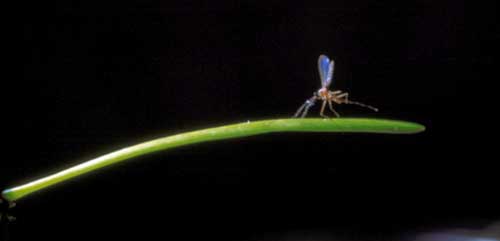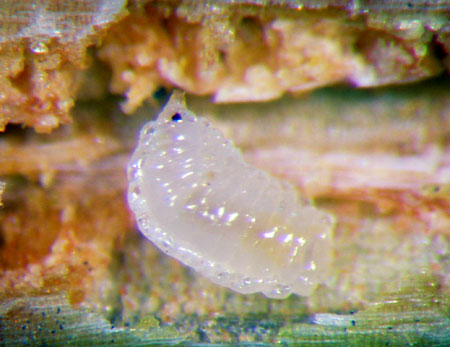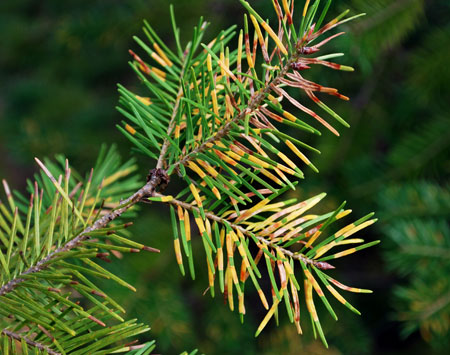Adults of Douglas fir needle midge have begun emerging
Douglas fir needle midge can cause unacceptable needle loss. Larvae cause galls to form on current-year needles. Severe infestations can cause unacceptable needle loss.
Douglas fir needle midges are beginning to emerge from their overwintering sites in the soil under trees that were infested in 2012. Michigan State University Extension’s trapping results from previous years have shown that emergence will last about three weeks.
The adults are a small fly, about the size of a mosquito (Photo 1), and emerge in the spring (around 200 to 225 GDD50). These adult midges will mate and females lay orange eggs in the soft needles of the expanding buds and elongating needles.

Photo 1. Douglas fir needle midge adult. Photo credit: USDA Forest Service, Bugwood.org
Eggs hatch within a few days and the midge larvae immediately bore into the growing needles, causing elongating needles to form a gall around the larvae. The larvae hollow out the needles as they feed. One or more white maggots can be found inside affected needles during the summer (Photo 2). The larvae will stay and feed in the needle all summer.

Photo 2. Douglas fir needle midge maggot in needle.
Photo credit: Howard Russell, MSU Diagnostic Services
At the site of the gall, the needle is frequently bent. The damaged area is initially pale-yellow (Photo 3), but as the season progresses, will darken and eventually turn brown. These needles may drop or remain on the tree. The damaged needles that remain on the tree can look similar to Rhabdocline needlecast or Cooley spruce gall adelgid. Even moderate needle loss can reduce the value of Christmas trees and heavily damaged trees may be unsalable.

Photo 3. Damage to needle from Douglas fir needle midge.
Photo credit: Jill O’Donnell, MSU Extension
Insecticides can be used to control Douglas fir needle midge, but timing the application is critical. Time your insecticide application within a week of emergence of the adults. However, weather can impact emergence and heavy rain and cool weather can slow down the rate emergence.
For more information, consult MSU Extension’s Douglas fir needle midge fact sheet, or watch the Douglas-fir needle midge video.



 Print
Print Email
Email

